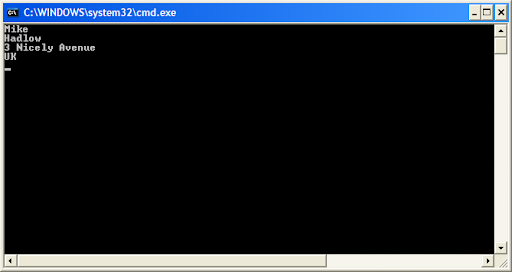My last post, 'more fun with yield return' described a simple method I'd added to a Contact class to iterate its properties (all strings) and only return those that were not null or empty. It was a nice use of the 'yield return' statement to build a custom iterator. I got a good comment from Ken Egozi who thought that I was putting UI code in my entity. He's right of course, the entity is not the right place for stuff like this. So I started thinking about creating a UI method to build the list and then a generic UI method for building a list of any entity's properties. It was getting pretty funky, with LineBuilder<T> and all kinds of crazy functional stuff, but a couple of refactorings later and all my code evaporated leaving just an array initializer and a Linq Where clause. How about this...
using System;
using System.Linq;
namespace Mike.PropertyRenderer
{
class Program
{
static void Main(string[] args)
{
var contact = new Contact
{
Firstname = "Mike",
Lastname = "Hadlow",
Address1 = "3 Nicely Avenue",
Country = new Country { Name = "UK" }
};
foreach (var s in new []{
contact.Firstname,
contact.Lastname,
contact.Address1,
contact.Address2,
contact.Address3,
contact.Town,
contact.County,
contact.Postcode,
contact.Country.Name}
.Where(line => !string.IsNullOrEmpty(line)))
{
Console.WriteLine(s);
}
Console.ReadLine();
}
}
public class Contact
{
public string Firstname { get; set; }
public string Lastname { get; set; }
public string Address1 { get; set; }
public string Address2 { get; set; }
public string Address3 { get; set; }
public string Town { get; set; }
public string County { get; set; }
public string Postcode { get; set; }
public Country Country { get; set; }
}
public class Country
{
public string Name { get; set; }
}
}
gives this:

I've definitely spent enough time on this now :P



1 comment:
If you're formatting value objects for the UI, how about serialising to hCard? You can go on forever with this stuff..
Post a Comment